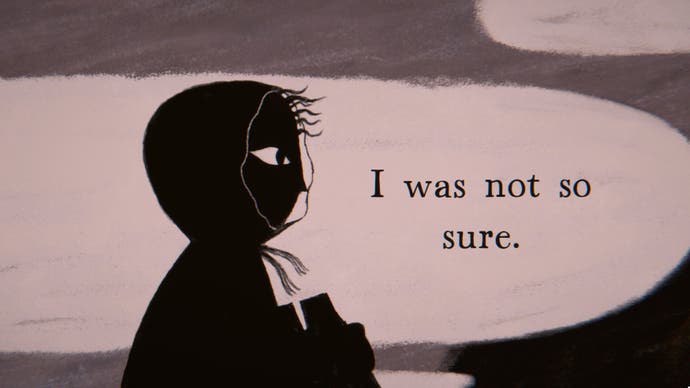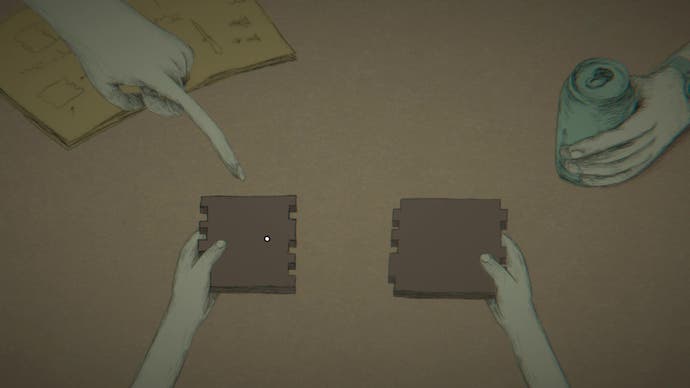Miniatures is a dreamy, interactive picture book of strange, dark tales I would have loved to have as a kid
Amanita more of this.
Miniatures is the kind of game you're only likely to play once, and at just 35 minutes long, that's not really saying very much at all. But it is the kind of game you're likely to keep on thinking about long after you've finished poking and prodding its collection of four strange tales. Based around a quartet of miniature objects, which are kept inside a mysterious treasure box on the game's menu screen, these standalone stories all share one important theme: they celebrate the weird and unknowable corners of childhood imagination, and how simple, everyday occurrences can balloon to magical proportions.
Take 'The Paludarium', which sees a boy called Emil pad around his large, austere-looking home while his dad readies the titular tank for his pet lizard Hugo. The sparse décor and large, intimidating spaces immediately paint a lonely kind of existence for the young lad, but as he moves from room to room, the outdoors gradually starts to seep through the polished concrete. Some gentle puzzles have you piecing together broken objects or finding snails beneath the leaves for Hugo to eat, but when the lizard makes a break for it, Emil joins him on a surreal chase through the undergrowth, his entire world now reduced to similar square fragments of reality that cannot be glued back together again.
'The Last Sand Castle', on the other hand, feels like an ode to Amanita Design's point and click adventures like Chuchel and Machinarium. Tiny, abstract creatures squeak and scuttle around a single, junk-strewn sand castle, and as you gently probe its shell-adorned doors and swinging shop signs with your mouse, you'll start assembling a teeny tiny band of players and instruments in the middle of it. It's a daft, yet joyful scene, even if its final moments end with the sharp pang of tragedy.
'Familiar', meanwhile, reenacts the dark, arcane magic of putting together flat-pack furniture (don't lie, we've all been there), with a family of four all helping to sort screws, nuts and those little wooden pegs into jars, turning screwdrivers, and rotating jigsaw-like drawer pieces to no avail. But as tempers fray and patience levels grow thin, a ferocious scribbled force begins to burst out from every crack, hole and shoddily-put-together wood panel. It's the perfect visual analogy for that kind of household chore, and you can't help but feel like something terrible has been unleashed in the making of it.




'The House of the Moon', however, is undoubtedly my favourite. This is the one that really feels like an interactive picture book, harking back to the likes of Device 6 and the work of developer Patrones & Escondites as you grab and drag the edges of the screen to scroll through this vividly drawn tale of a boy searching for his lost mum. As well as travelling from scene to scene, you'll also need to use your mouse to follow parts of the text - sliding doors together, for example, or making fruit and lemonade 'disappear' by clicking on them. Later, the boy must seek out mysterious clouds of blue, fish-scale-like dust with his torch, and players must nudge and investigate each scene with their mouse. And the ending, man alive, it just hangs there ominously, like you've opened the door to something big and unfathomable you don't fully understand.
It's these kinds of abrupt, but perfectly pitched endings that allow each of Miniatures' chapters to linger so strongly once they're all over. They're the kind of big reveals that leave you hungry for more but also act as the best possible full stop on everything you've just seen and experienced, because to spell out what happens next would be to rid it of its magic and wonder. Instead, they pass the baton to your own imagination to fill in the gaps, letting you draw your own conclusions about what it all might mean and how one object might relate to another. It's a feeling that goes beyond the simple and light touches of interactivity you'll find in Miniatures, and the fact it managed to produce such a strong and evocative impression in little as five to ten minutes per tale is extraordinary. If that's not worth half an hour of your time, I don't know what is.


